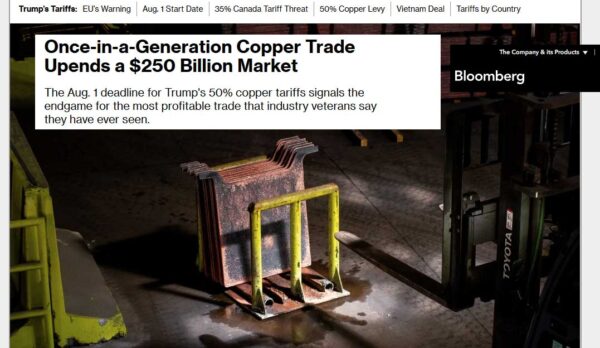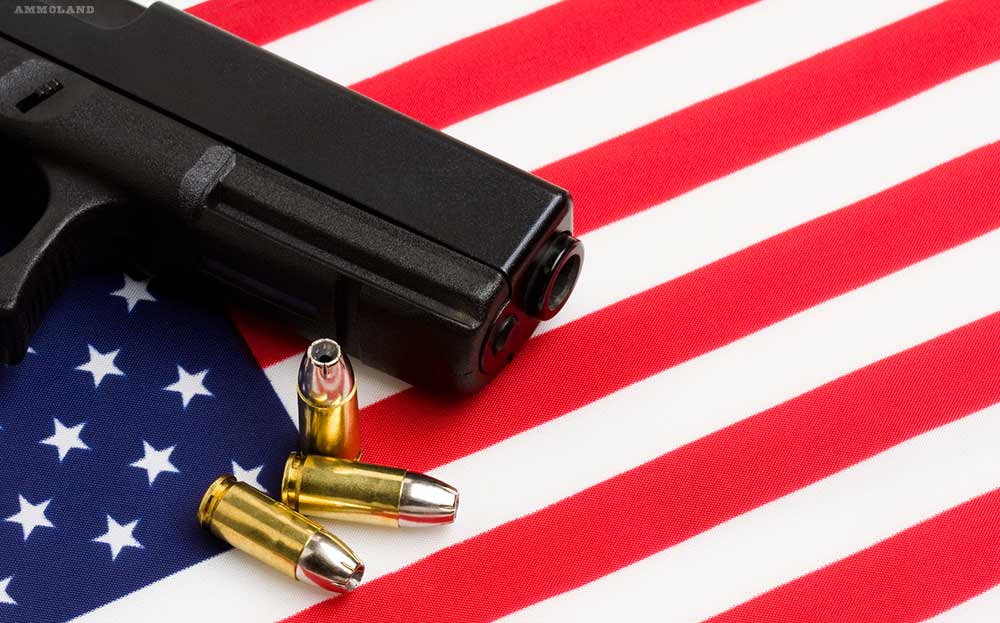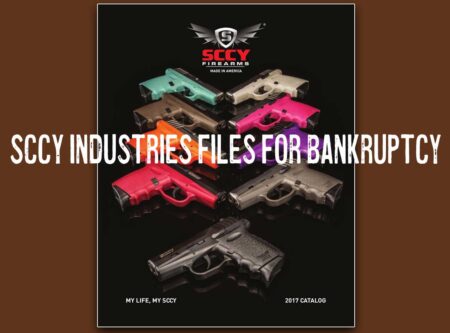
For years, American firearms manufacturing has been one of the few industries to resist the offshoring wave that gutted so much of our industrial base, left our great manufacturing cities in ruin, and our great American workers unemployed.
While other sectors sent their factories and jobs overseas, U.S. gun makers doubled down at home—and they’ve set the example for how to do it right. Today, as Trump’s new tariffs and initiatives improve access to raw materials and push back against cheap foreign imports, America’s gun industry is perfectly positioned to reap the rewards, even if it means navigating some short-term bumps like higher material costs.
The One Industry That Stayed Home
From Smith & Wesson in Massachusetts to Palmetto State Armory in South Carolina, the U.S. firearms industry stands as the gold standard for keeping manufacturing on American soil. Unlike the auto and electronics industries, most gun makers never chased cheap labor in Asia or Mexico. Sure, there are exceptions—some foreign-owned brands like Glock or SIG Sauer have shifted parts of production overseas, and a few companies source components abroad to cut corners—but the core of the industry stayed put, thanks to strict regulations like ITAR and ATF rules that keep sensitive tech and expertise right here.
Come to think of it, International Traffic in Arms Regulations (ITAR)’s effectiveness in shielding this sector from offshoring serves as an early blueprint for the kind of tariff policies championed today by President Trump, which similarly hiked costs on foreign alternatives to boost domestic production. By imposing regulatory “tariffs” on exports of tech and know-how, ITAR has quietly demonstrated how protectionism can sustain U.S. manufacturing strength, much like Trump’s duties aimed to “make America great again” in all our industrys.
Under ITAR, the Firearms Industry modernized and kept producing here at home—dominating the world in innovation and reliability. Today, the U.S. leads the planet in firearms manufacturing, exporting not just products but technology, training, and influence. It’s no exaggeration: America sets the global standard for small arms, holding a whopping 43% share of global arms exports from 2020 to 2024, up from 35% in prior years.
Why Trump’s Tariffs Could Reset the Playing Field
In recent months, President Trump imposed new tariffs on steel, aluminum, and imported arms—causing breathless MSM reporting and sending shockwaves through global supply chains. He doubled duties on steel and aluminum to 50% in June, with copper set for the same hike starting August 1 2025.

Critics complain about rising costs, and yeah, these could bump up prices for guns and ammo since raw materials like copper and steel are key ingredients.
But U.S. gun makers see something different: a chance to double down and own the field.
- Foreign competitors are losing their edge as Turkish shotguns and other low-cost imports become less attractive.
- American suppliers can finally gain breathing room to innovate without being undercut.
- The industry’s refusal to offshore has kept expertise and capacity here at home—ready to fire up when demand returns.
The reality? Demand for guns and accessories is soft right now, with sales dipping to about 15.3 million in 2024 from a 2020 peak of 21.8 million, and Q1 2025 down another 9.6% year-over-year.
But unlike other industries, firearms manufacturing never left the USA. That decision could pay off big as tariffs encourage more “Buy American” momentum, especially with the global market projected to hit around $76 billion by 2033.
The Unsung Backbone: Small CNC & Tool Shops
Behind every American firearm rolling off the line is a network of small and mid-sized manufacturers, CNC houses, and tool makers that supply the raw parts and precision components big names depend on.
- Rosco Manufacturing specializes in barrels for AR-platform builders worldwide.
- Faxon Firearms provides barrels and bolt carrier groups (BCGs) to brands like 2A Armament and Brownells.
- Microbest, a precision machining powerhouse, manufactures mil-spec BCGs for Bravo Company Manufacturing (BCM), Sons of Liberty Gun Works (SOLGW), and even Smith & Wesson.
- AO Precision Manufacturing, founded in 1982, produces critical parts for Colt, SIG Sauer, and Mossberg.
- Toolcraft, a major OEM for BCGs and AR parts, supplies Palmetto State Armory (PSA) and others—and is now part of PSA’s parent company, JJE Capital.
These firms may not have the household name recognition of Ruger, GLOCK or PSA, but they’re the hidden backbone of America’s gun industry—ensuring production doesn’t skip a beat and keeping the U.S. firearms ecosystem independent from fragile foreign supply chains. Together, they help drive a massive $91.7 billion economic impact, up from $90.5 billion the year before.
Inside America’s Gun Factories
Want to see what sets American firearms manufacturing apart? These factory tours pull back the curtain on how iconic brands like Smith & Wesson and Ruger are blending cutting-edge technology with old-school craftsmanship.
Smith & Wesson Factory Tour: The Legacy of Wheel Guns
Deep in Springfield, Massachusetts, Smith & Wesson’s historic factory still produces revolvers using a remarkable mix of 21st-century CNC machines and artisan polishing by hand. Watch molten metal become legendary firearms, and see why “fit and finish” isn’t just marketing—it’s a way of life here.
Ruger Factory Tour: Lean, Precise, and Built to Last
At Ruger’s Mayodan, North Carolina, plant, you’ll see their lean manufacturing philosophy in action. Each product line runs like a “factory within a factory,” where raw bar stock enters one end and finished firearms roll out the other. From hammer-forged barrels to Marlin lever-action rifles, Ruger’s operations show how investment in modern equipment and American workers pays off.
Inside The Factory Where Daniel Defense AR-15s Are Made
Down in Black Creek, Georgia, Daniel Defense’s state-of-the-art facility highlights its veteran-led approach to AR-15 platforms. Robotic arms handle forging and assembly, but skilled hands ensure every rail and suppressor meets mil-spec standards—proving why it’s a go-to for pros who demand reliability.
Aero Precision Factory Tour: Machining Mastery in the Northwest
In Tacoma, Washington, Aero Precision machines uppers, lowers, and handguards in-house with high-speed CNC setups. Tours reveal how automation pairs with manual inspections for precision parts that builders swear by, all while keeping jobs local and quality sky-high.(Embed videos or links to these factory tours here for an up-close look.)
What Sets These American Factories Apart
- Relentless Focus on Quality: Inline gauging, stop-the-line checks, and master craftsmen ensure precision at every step.
- Modern Automation Meets Human Touch: CNC machining works alongside hand-polishing and engraving—proving efficiency doesn’t replace skill; it amplifies it.
- Pride in Keeping It Local: These companies stayed in America while others fled, training generations of skilled workers.
- Poised for a Rebound: Even in today’s “Trump Slump,” with challenges like environmental regs and soft demand, U.S. gun makers are maintaining capacity and expertise, ready to surge as market conditions shift.
To put it in perspective, here’s how the firearms industry stacks up against others that offshored manufacturing:

Staying Dangerous & Heavily Armed Powers Freedom
While the media obsesses over tech layoffs and outsourced manufacturing, America’s gun makers have quietly shown how to do it right. They never left.
And now, with Trump’s tariffs and initiatives reshaping the global playing field—despite the hurdles—they may have the rare chance to lead a broader American manufacturing renaissance. Let’s not forget: this success isn’t just about the big names. It’s about thousands of small shops and craftsmen across America—working quietly in the background to keep our nation armed, free, and self-reliant.
Next Level Armament Factory Tour: Michigan’s Most Innovative AR Rifle Maker






of course US gun makers never left the US when they got the govt to ban Chinese and Russians guns and ammo and then people are forced to use an FFL for everything
The gun industry should prioritize relocating from those hostile gun hating states. No matter what.
Winchester makes the Model 70 in Portugal and I believe the 1894 rifle is or was made in Japan for a time.
Who is left for American owned gun companies? Winchester was bought by FN Herstal decades ago. Colt is owned by CZ. Smith & Wesson was owned for a time by a British investment firm
and all the little parts you can buy to build your own at home, truly American made…….where is mike rowe he should mill a lower with an old fashioned mill that is a dirty job
Defending American manufacturing is always welcome, but ignoring that tariffs on steel, aluminum and copper ARE going to raise prices, while demand is already on the downward trend, and then stating that we’re due for a renaissance, is some 4D chess Trump-rubbing. There is absolutely no sign of Turkish imports slowing down, they now have PCCs, shotguns, 2011s and more coming in monthly. Alpha Foxtrot and Dasan are producing and designing stuff for Watchtower that claim American manufacturing. Like other commenters have mentioned, Colt is now owned by CZ. Remington and Winchester have been mismanaged for decades. The majority of… Read more »
I’m just fine with tariffs or other measures needed to keep our 2A healthy. It’s always relevant when weapons are conceived, designed, and MANUFACTURED by an industry at HOME! … in the USA.
What a silly puff piece. I wonder who wrote it? The tariffs, while I’d argue generally are good, however when they affect anything 2A related, that’s an infringement and can’t be allowed. Further, how many guns are actually made in America? Springfield Armory, most of their guns are imported, such as their striker fired guns like the Hellcat and their bull pup rifles, Croatian made by HS Produkt. Look at Weatherby, their most popular rifle, the Vanguard, is it made in Wyoming where their factory is? No, it’s made by Howa in Japan. How about Browning? With exception only to… Read more »